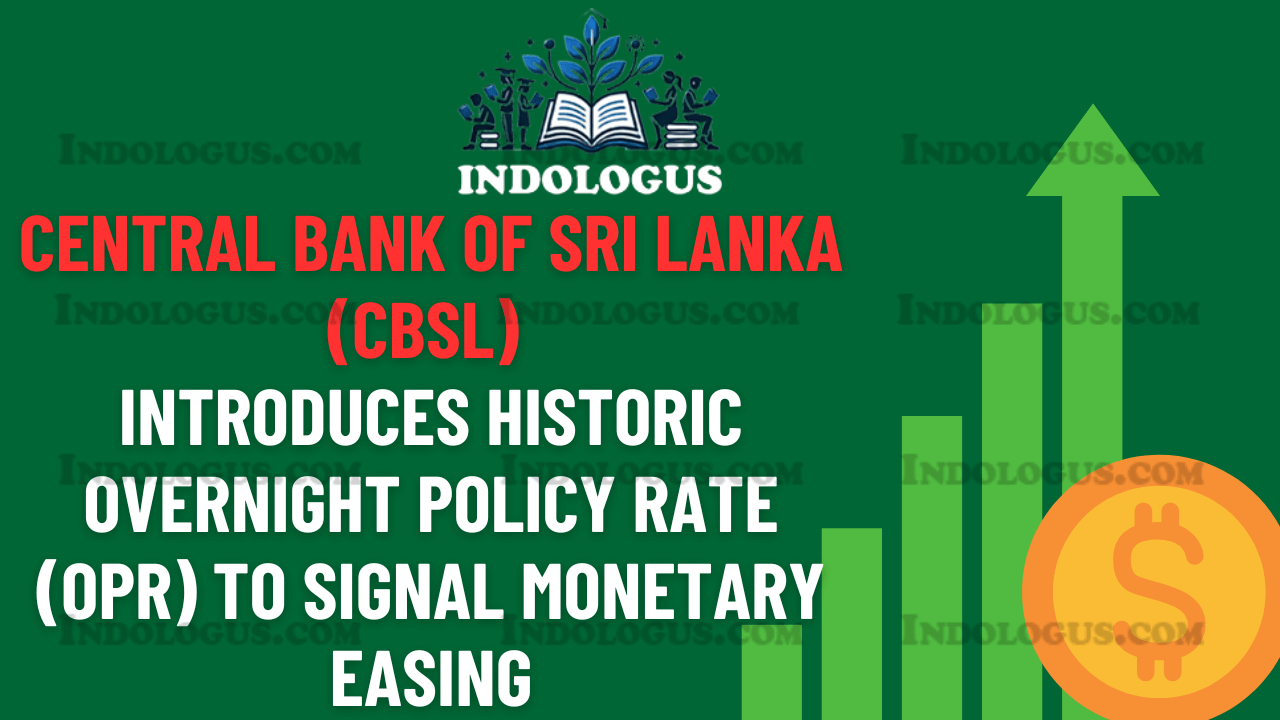The Central Bank of Sri Lanka (CBSL) has taken a landmark step in monetary policy by introducing the Overnight Policy Rate (OPR) as its primary policy instrument. This move, effective 27 November 2024, aims to enhance the efficiency of monetary transmission, stimulate economic activity, and guide inflation towards a 5% target over the medium term.
Key Highlights of the Policy Shift
Introduction of OPR at 8.00%
- The OPR replaces the dual policy rate mechanism and becomes the central tool for signaling and operationalizing monetary policy.
- SDFR (Standing Deposit Facility Rate) and SLFR (Standing Lending Facility Rate) remain linked to the OPR with a margin of ±50 basis points, setting them at 7.50% and 8.50%, respectively.
Easing Monetary Policy
- The decision reflects a 50 basis points reduction in the effective policy rate.
- Markets responded positively, with Treasury bill rates adjusting accordingly.
Drivers of the Policy Decision
Domestic Economic Assessment
- Deflationary Trends: Headline inflation remains negative due to reduced fuel prices, transport costs, and volatile food prices.
- Core Inflation Moderation: While core inflation has slowed, a gradual rebound is expected by mid-2025, converging toward the target.
External Sector Resilience
- The Sri Lankan Rupee appreciated by 11% YTD against the USD, supported by tourism and remittance inflows.
- Gross Official Reserves reached $6.5 billion, aided by multilateral inflows and a Chinese swap facility.
Private Sector Growth
- Declining market interest rates have spurred broad-based credit expansion across key economic sectors since May 2024.
Impact and Expectations
Boosting Economic Activity
- The policy aims to stimulate demand and support domestic economic recovery amidst deflationary pressures.
- The CBSL expects market lending rates to remain favorable, encouraging private sector credit growth.
Inflation Targeting
- Inflation, currently negative, is projected to turn positive by mid-2025, stabilizing around 5% in the medium term.
IMF Program Independence
- CBSL clarified that this policy move is unrelated to the IMF-EFF program, aligning instead with best practices in inflation targeting.
Significance for Sri Lanka’s Economy
This historic shift to the OPR demonstrates CBSL’s commitment to modernizing monetary policy and supporting economic recovery. The move balances inflation management with stimulating growth, ensuring Sri Lanka’s progress toward a stable, resilient economy.
For students preparing for competitive exams or interested in macroeconomic policy, this decision is pivotal in understanding how central banks navigate complex economic landscapes to achieve long-term goals.
Key Terms to Note:
- OPR (Overnight Policy Rate): The new primary tool for CBSL monetary policy.
- SDFR & SLFR: Rates for overnight transactions, linked to OPR.
- Flexible Inflation Targeting (FIT): CBSL’s framework for achieving a stable inflation rate.



